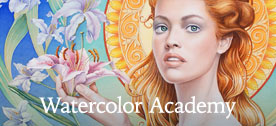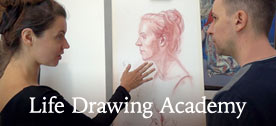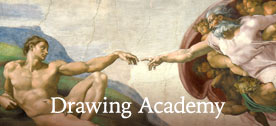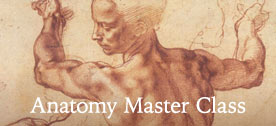Art Lesson 48, Part 5
Discover How to Paint Using the Flemish Method
Learn how to paint like the Old Masters!
Old Masters Academy Online Course
Self-study, self-paced online video course Lifetime membership One-time payment: $487 Enroll Now!Personal Tutoring online + Online Course
Unlimited tutoring by the Academy teachers Lifetime membership One-time payment: $997 Enroll Now!« Back to the Art Lessons List
How to Paint Various Types of Fabric in Oil
We continue working with the headwear which has a rich decoration and will require some patience to complete it.
Three brushes are used for the task – a small round brush for painting small details in light colors, a dry brush for smoothing light gradients from light to mid-tones and a rubber pointed brush for removing excess paint if required.
The base for this part is a light brownish underpainting which helps to keep the tone of the hood as one unit. Omission of this underpainting will make the task both much more difficult and time-consuming.
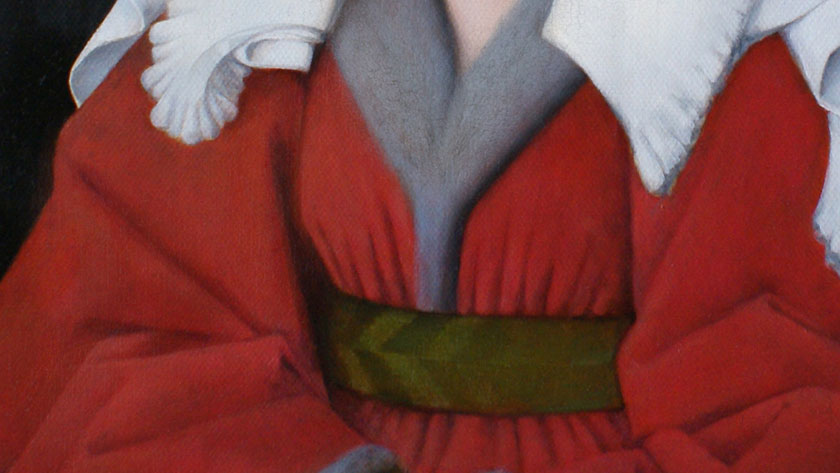
There is one more thing to be mentioned about Objects Visible by Light and Shadow. We paint a white object and as you can see not much color comes out of white. So how to depict all the nuances of white on white?
Let’s have a look at the following example: If you put a white egg on a piece of white paper, with another white paper as a backdrop, you will see the egg only because it obstructs the light and casts shadows. There are two kinds of shadows – on the egg itself and on the paper. So, what makes the egg visible? If you move the egg, you will see the egg more or less distinct, depending on the sharpness of the shadow and the light. Whether the light is concentrated or diffused. The same case is with Margaret’s headwear. The folds of the white cloth are only visible. They can be depicted with the help of gradations of the white, tones and darker shades. This has to be studied carefully. As the result you shall achieve a beautiful as well as skilful piece of work.
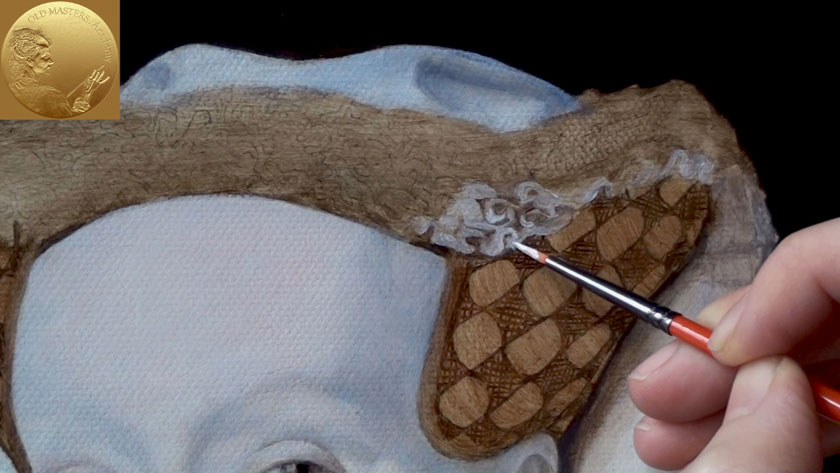
Going on with the red dress. By this time the oil paint of the dress is dry and we can apply the final touches to illustrate the texture of the dress material. The mix of red and white is used to the effect. The mix should be applied over the dress with the help of a flat stiff brush. This not only provides an interesting effect on the dress texture but also highlights the light places of the dress.
The collar of Margareta’s dress is now dry and we can apply the final strokes. Here we shall use a scumbling technique. The lighter cold opaque paint and a flat firm brush will be indispensable. So we take a little paint with the brush and rub it into the surface of the picture. The idea is to keep brown layers beneath slightly visible, so as to get the effect of silver haired fur.
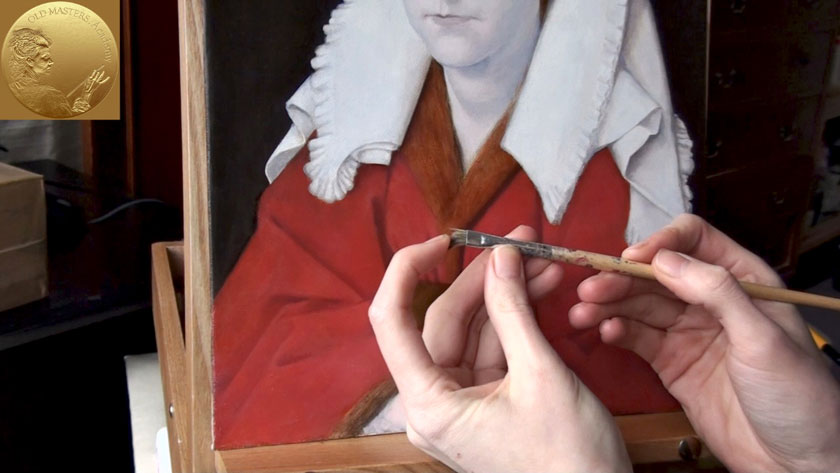
Scumbling—is a perfect technique for modifying a color and causing an effect on the whole painting. When you use Scumbling technique, choose opaque oil paint and never a transparent one. The process consists of rubbing the mixture of the body color over the surface that was painted and dried beforehand.
Generally, this scumble is of a lighter color than the underpainting itself. The scumble is rubbed over with a stubby brush, slightly dipped into the paint. As much surface as is desired may be covered in this way. The aim is to make a hazy effect on the part and to reduce any sharpness of color or drawing.
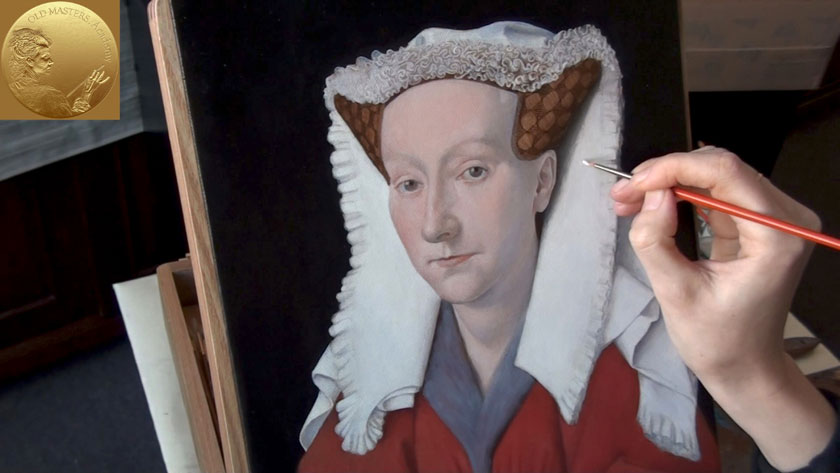
Scumbling will not be effective without varnishing the picture afterwards. The oil in the paint is absorbed immediately, and rubbing of the color gives an unpleasant dead look to the canvas.
The green belt on Margareta’s dress requires some finishing touches. A Small round brush is used for the purpose.
All kinds of lighting effects you can easily study with the help of this small accessory – the dress belt –also including the color and texture. To study the surface of an object is the most important to you. Try to depict the texture as well as the nature of the material you are painting.
We continue with shadows on Margareta’s headwear. Each shadow has its color. There are many ways you can advance in making shadows – paint in opaque solid darker paint or, for example, gradually deepen the shadows using glazing technique. This time we will use glazing, which helps to control the depth of the shadow better. However, this method is not the fastest one. Each glazing layer has to be left to dry before proceeding to the next one. For the job we use transparent paint with enough medium to darken the shadow, little by little.
Also, by means of glazing we can deepen more the brown color on Margareta’s headwear keeping the decoration lines still visible. Top glazing layers are very transparent and therefore all the colors and decoration beneath are noticeable. At the same time all deeper layers are optically mixing with the top glazing giving the wanted new color changes.
A small flat brush with soft hairs will suit for the job. We use the same glazing medium made from the Dammar Resin Crystals diluted in the Turpentine and then mixed with Linseed Stand Oil. However, you can use Liquin Original as a glazing medium.
